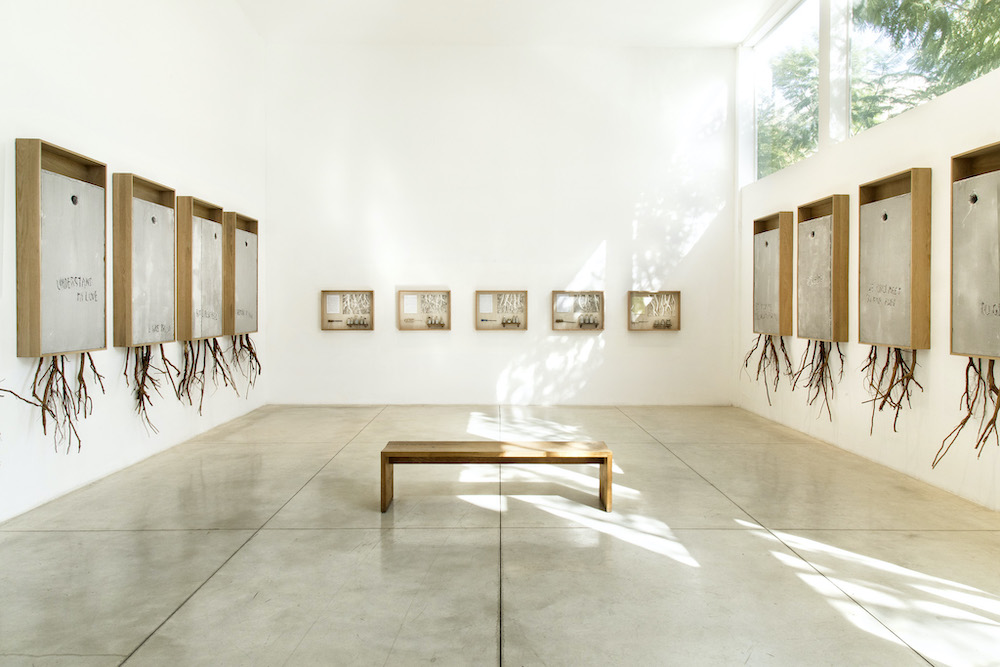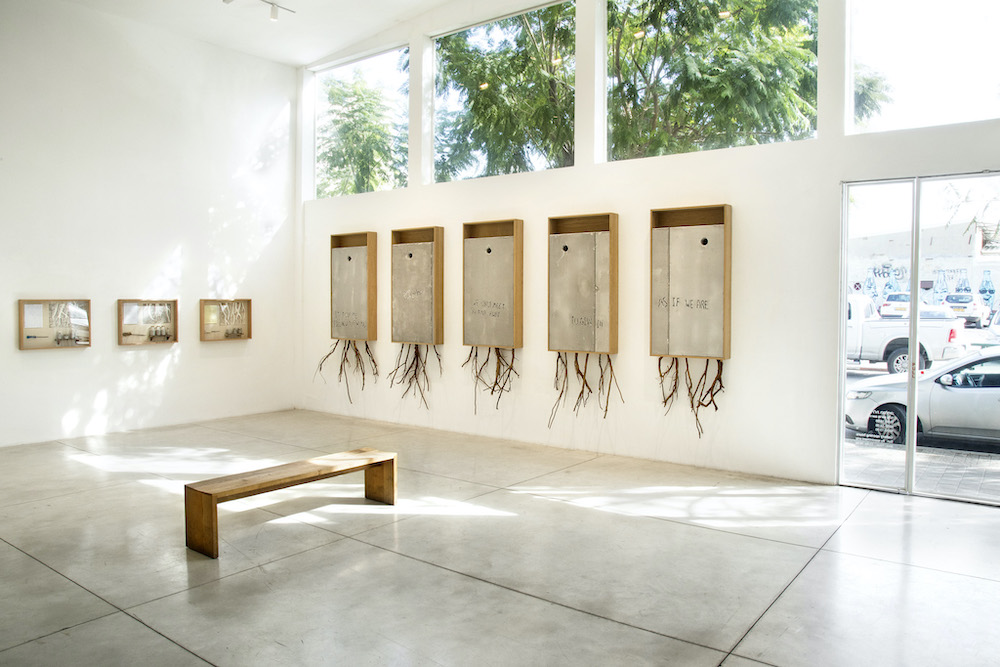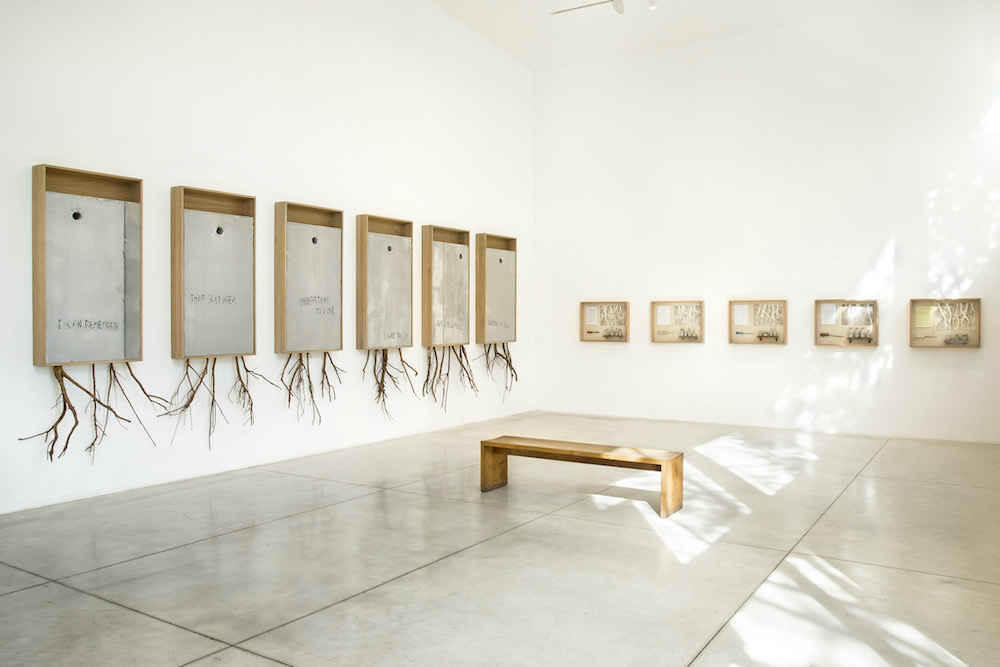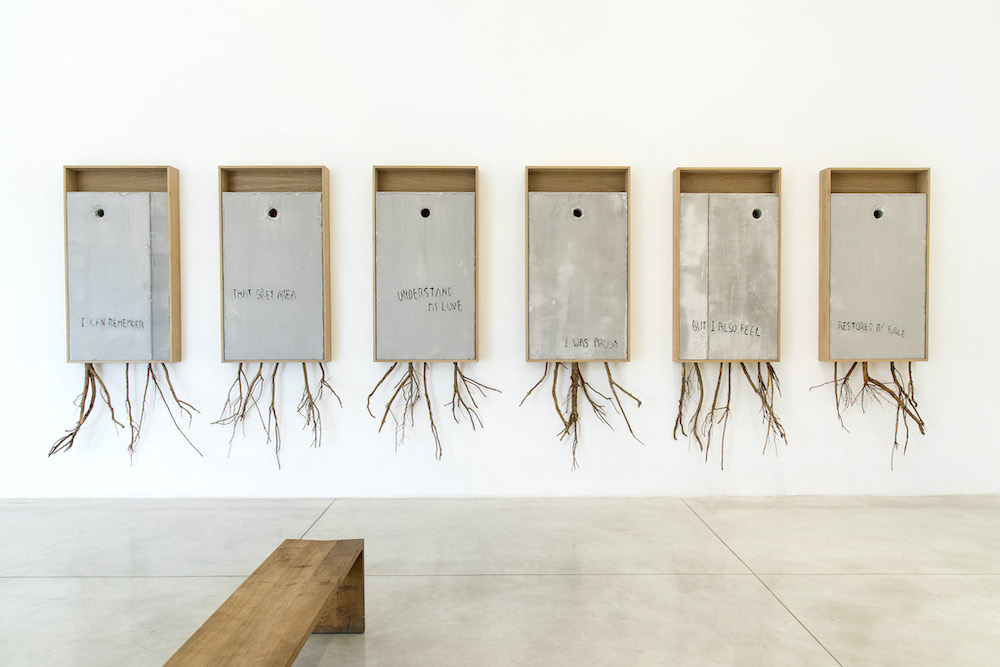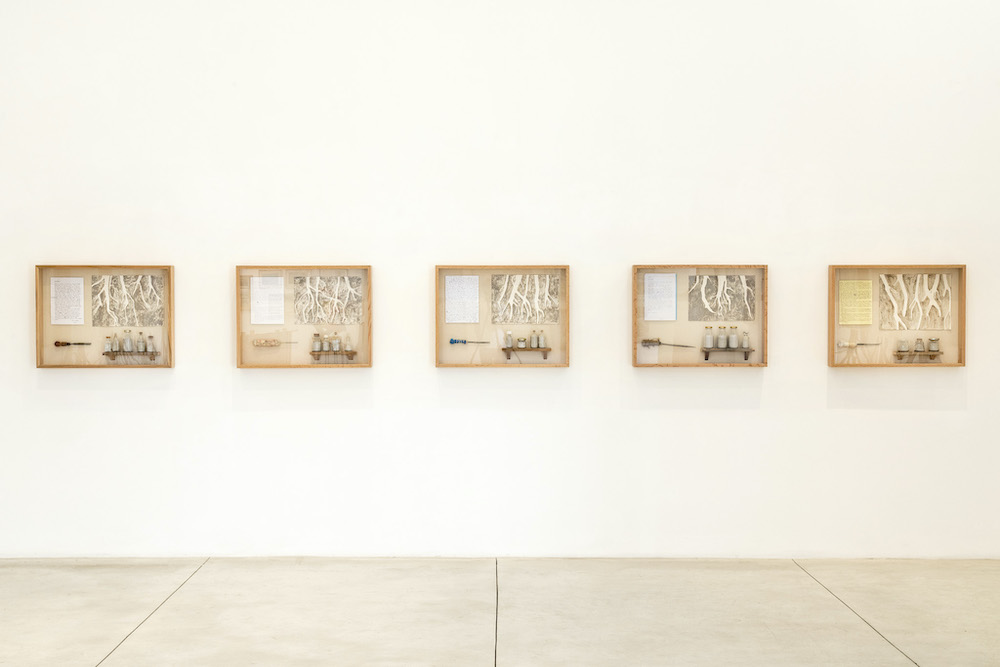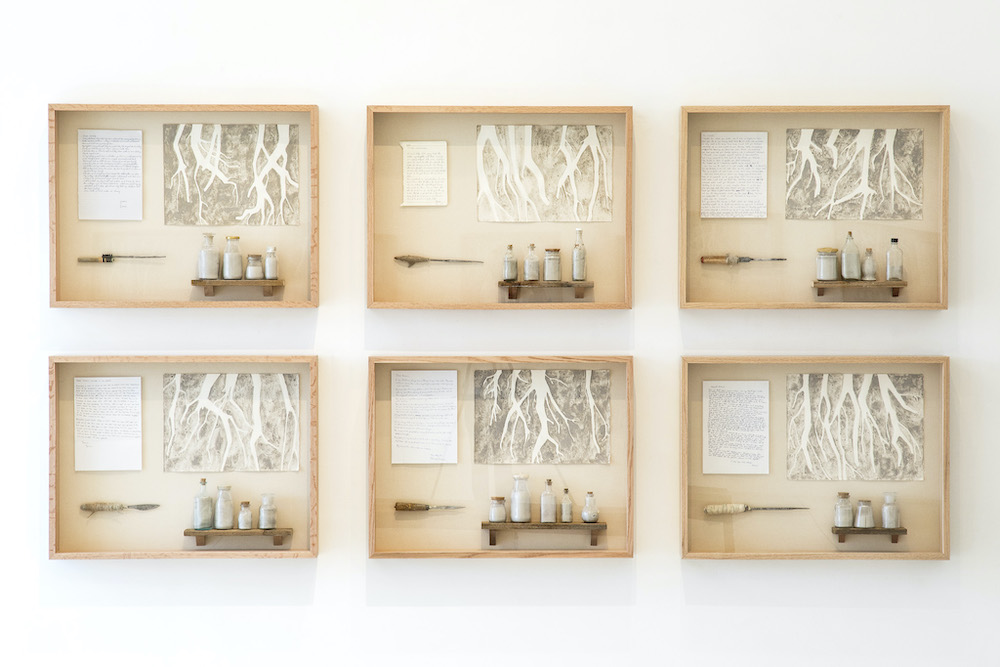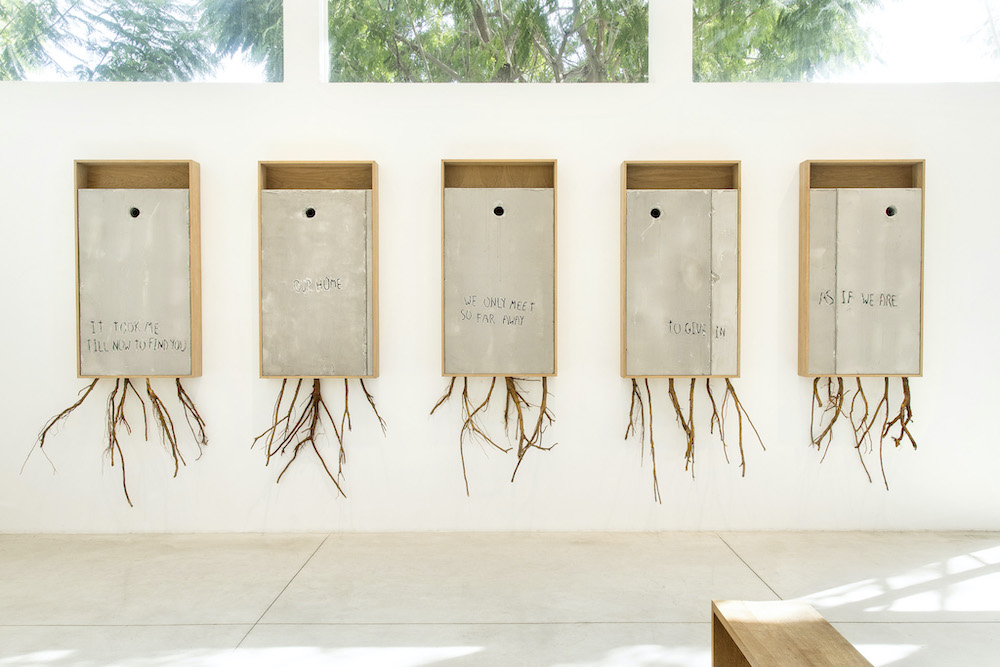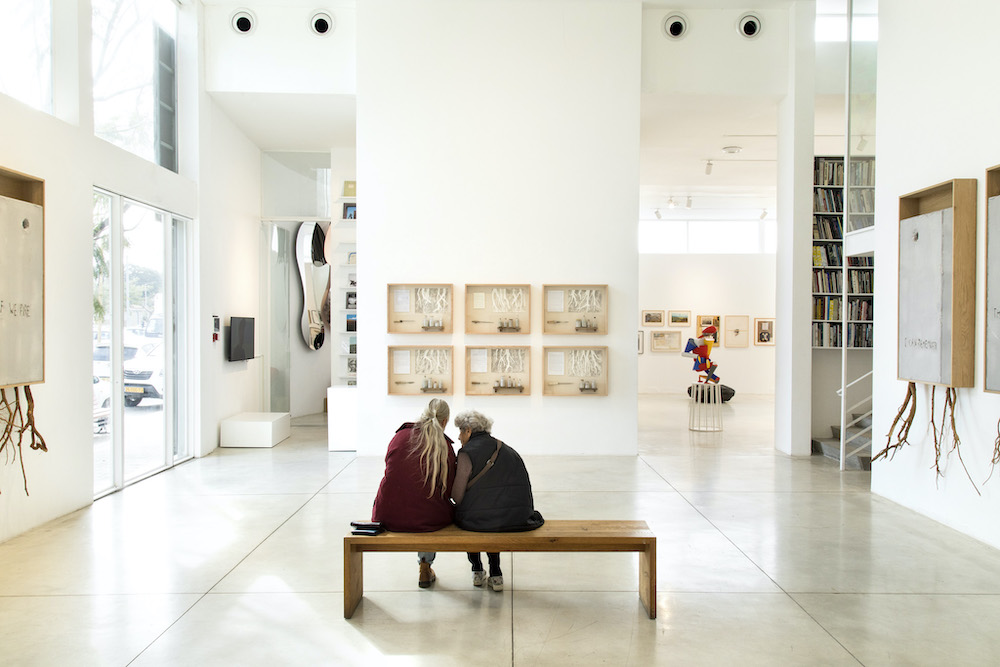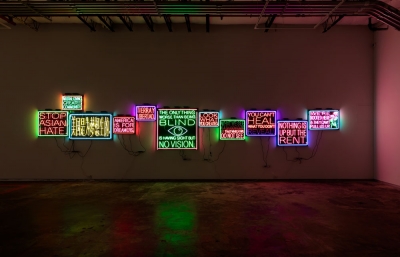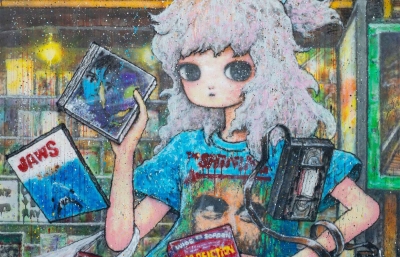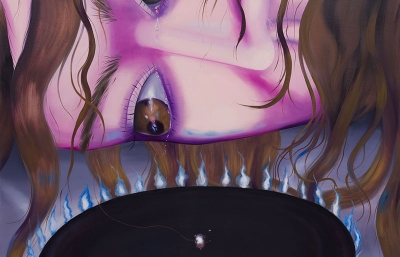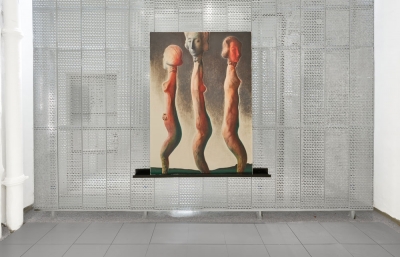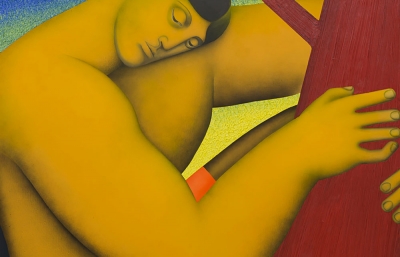It Took Me Till Now to Find You is being revitalized as Addam Yekutieli (aka Know Hope) takes his project, introduced at London's Lazarides back in April 2017, and brings it closer to the conflict at Tel Aviv's Gordon Gallery. The main installation features scaled-down replicas of the notorious Israeli West Bank wall, roots sprouting from the base, with quotes hand-carved by both Palestinians. Paired with boxes, each containing an original hand-written letter, the tool used to scratch the text into the wall and bottles of dust accumulated from the etchings, the exhibit a visceral, powerful process.
Gordon Gallery opened the project at their Tel Aviv space on January 16th, lending proximity and deeper perspective to Yekkutieli's emotive project. Curious to know the artist's thoughts about having a chance to show these pieces in his homeland, we reached out to Addam and had a little chat.

Sasha Bogojev: How difficult was it to find someone to showcase this body of work in Israel?
Addam Yekutieli: Fortunately, it wasn’t too much of a challenge to find a place to show this body of work in Tel Aviv. Gordon Gallery supports me very much, and they've been interested in bringing these pieces to the gallery for quite some time now.
I’ve also been wanting to present this project in this region since it was created, and I’m very happy to finally have the chance to show it in Tel Aviv. I feel the project is relevant here for obvious reasons, but besides the conceptual aspect, I was happy for the participants in the project to be able to see the exhibition in person.
Unfortunately, many of the Palestinian participants weren’t able to see the exhibition, something that reinforced the concept of the project even further. I hope to someday show these works in the Arab-Palestinian sector, though there are no concrete prospects regarding this at the moment.

Were you or anyone around you nervous or afraid of what the response could be?
I wouldn’t say I was nervous or afraid, but more curious to see how the work would be received. People living in this region have a more layered connection to the topic, which is not only political but emotional in a way that is intertwined with personal narratives on a collective level.
It’s a charged subject, and the political reality and conflict have ties to everyone in some way. Whether directly or indirectly, it’s in the general psyche. That said, in Tel Aviv as in many other cities and countries around the world, the art scene is generally more liberal and left-wing oriented, so I didn’t anticipate any dramatic outcome.
This is also problematic, as it is homogenous. One of my intentions while working on this project was to make it as broadly inclusive as possible, in terms of the participants who wrote the letters, so I worked hard to find representatives from eclectic backgrounds in both societies. Through this, I was hoping to show the elaborate nature of people living within the local reality.
What were your hopes about the best or worst possible case scenario?
I didn’t have any specific expectations regarding the reception of the work. As with many projects, but even more so in this one, I hoped to find a way to bypass the complications of the polemic political discourse by focusing on a very basic common denominator.
The participants were asked to write about notions of belonging, of home and longing from whichever perspective they found relevant. Later, the phrases from their letters were carved on to replicas of the Segregation Wall, simultaneously detaching them from their original context and intention, but also allowing an opportunity for viewers to connect with the texts based on face-value or their own intuitive and immediate reaction.
My hopes were for viewers to have these reactions tie in with their personal experiences and create an empathetic perspective on an issue that is normally discussed in a very pragmatic and ideological manner.

What was the actual response like, and how does that make you feel?
There was an overall positive response to the work, and people seemed to connect to how the concept and content were communicated. I’m happy the work resonated with people who saw it, and I hope the experience fostered further reflection on the Israeli-Palestinian conflict and our individual places within it.
Did the show open new conversations, possibilities, or maybe even projects?
I’m happy with the timing of this exhibition, as it transitions seamlessly to another project I’m working on now, tentatively titled A Human Atlas. This project deals with scars and borders, and draws an analogy between the two things–how they’re created, our relationships with them and their presence in everyday life.
As part of this project, I’ve been documenting scars and collecting testimonials from Israelis and Palestinians regarding the anecdotes related to them. I’ll later select scars that resemble fractions of territorial borders and create reformed maps of the region by connecting the photographs of scars I’ve collected.
The project will consist of mixed media artwork and outdoor interventions along various borders of Israel and Palestine, all culminating into a book, hence the title of the project.
As with the current exhibition, I’m hoping this encourages an empathetic understanding and portrayal of a complex political reality and the historical narratives that compose it.

Now that the dust has settled, what was your favorite moment about this body of work?
I don’t have a specific favorite moment, as the whole process itself was fascinating and very meaningful to me. It was interesting to read the stories and I'm very humbled that people were willing to share their experiences with me. There were many powerful stories, like the one of a bereaved mother who wrote to the parents of the man who killed her son, another written by a woman living in a refugee camp on the West Bank, and many others.
One letter that is very special to me was written by a Holocaust survivor to her childhood friend from Slovakia. As young girls, they were best friends and very close, and the author Franci spent much of her childhood with this friend and her family. The Second World War began, and when her friend's father joined the Gestapo, their relationship ended abruptly and they lost touch. The letter was written as if the two had reconnected, even though, in reality, this was not the case.
The phrase I extracted from this letter is It Took Me Till Now to Find You. I felt that it so poignantly communicated the two young girls’ –both now in their late 80’s–relationship and how meaningful and defining an experience like this can be. Additionally, I felt it was interesting in the context of the Israeli-Palestinian conflict, that the letter portrays the relationship as if it were between two people, or entities for that matter, who are destined to be together but prevented by circumstance, and after years of tribulations, recognize each other and, hopefully, reconnect.
This might be naïve or simplistic, but art allows this: a reimagination of what seems like an impossible reality.
Addam Yekutieli's It Took Me Till Now to Find You is on view through February 15, 2020.

